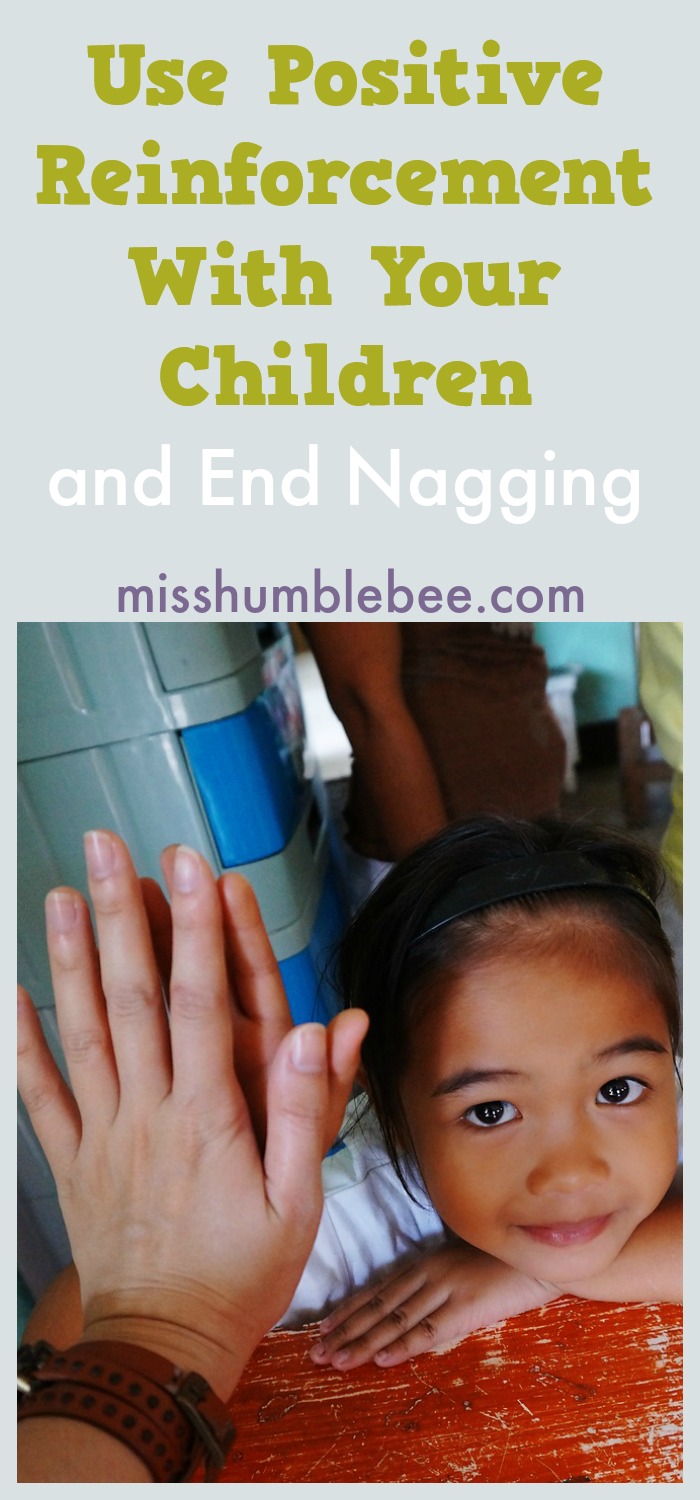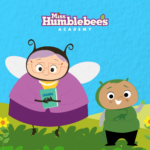Below: Help your child develop the behaviors and skills that will help her thrive through the use of positive reinforcement. Bonus: You’ll get to stop nagging!
“How many times have I told you to pick up that plate?”
“Have you finished your homework yet? Come on! You need to get it done!”
“Why isn’t your room clean yet??”
Do you ever feel like all you do as a parent is nag your kids to do the things you’ve told them to do a million times already? Wouldn’t it be nice if you could stop all the nagging and help your kids develop good behaviors and life skills? While not easy, it is possible.
By careful use of positive reinforcement, you can cut way down on nagging your children while simultaneously teaching them skills they’ll use throughout their lives.

Use Positive Reinforcement With Your Children and End Nagging
What is positive reinforcement?
Positive reinforcement is a stimulus that occurs with, or immediately following, an act, which makes the act more likely to be performed again. It is the addition of something (the stimulus) to the situation.
For instance, giving your dog a treat (the stimulus) after he sits at your command will make him more likely to sit the next time you tell him to.
Positive reinforcement, when used correctly, can be a powerful tool to use as a parent. It can help us teach our children certain life skills in a way that motivates and encourages them instead of getting after or nagging them. However, we must be careful in how we use positive reinforcement.
We often associate the word positive with the word good, but not all forms of positive reinforcement are good. Below we’ll offer several examples of when positive reinforcement is used in a way that yields good results and several examples of when positive reinforcement is used in a way that yields bad results. This will clarify how positive reinforcement can be both good and bad.
Good examples of positive reinforcement
Your child started a puzzle, didn’t finish it, and now wants to play a board game. You tell her she can play the game as soon as the puzzle is picked up. She picks up the puzzle and you give her the game.
Receiving the game after picking up the puzzle offers positive reinforcement for picking up after herself.
Your child holds the door open for you. You say thank you.
Hearing thank you is positive reinforcement for holding open the door.
You notice that your child has been working hard on his schoolwork. You tell him how proud you are of his effort.
The praise is positive reinforcement for his hard work.
Bad examples of positive reinforcement
You and your child are at the store. She sees a box of cookies that she wants, but you tell her you can’t buy them today. She starts throwing a tantrum, so you toss them in the cart to get her to be quiet.
Getting the cookies is positive reinforcement that throwing a tantrum will get her what she wants.
You’ve told your child several times that he needs to clean his room before he can play video games. He hasn’t cleaned his room, but it’s Friday night and you don’t feel like nagging him again, so you don’t say anything when he grabs the controller.
Letting him play video games is positive reinforcement that he doesn’t have to do what you told him to do.
Your child has been whining for the past ten minutes. In a moment of frustration, you yell at him to stop.
Yelling at him is positive reinforcement that whining will get him your attention.
How to use positive reinforcement effectively
As you can see, positive reinforcement can be tricky because sometimes we end up reinforcing negative behaviors that we don’t want to reinforce.
Using positive reinforcement to establish good behaviors and skills requires forethought and being mindful of how our words and actions affect our kids.
There are many types of positive reinforcement, some tangible, some not. Below is a list to get you thinking about what types of positive reinforcement you want to use with your children.
- Words of encouragement- you’re working hard, I appreciate you, thank you, etc.
- High fives
- A hug or pat on the back
- A small tangible reward- stickers, snack, toy, etc.
- A small intangible reward- outing, play date, etc.
Once you have an idea of what types of reinforcement you want to use, you need to decide how you’ll do the reinforcing. Some ideas are below.
- Catch them in the act- Make a point of noticing and reinforcing good behaviors, such as being kind, sharing, cleaning up, etc.
- Talk behind their back- Discuss the things about them you love to another adult when they are within ear shot.
- Choose a specific behavior to target and reinforce it every time it’s performed
- Let them in on the plan- Talk with your child about working on a certain behavior and discuss the positive reinforcement that will be used. For example, maybe you’ll make a sticker chart with a reward after ten stickers are earned.
The longer you use positive reinforcement in a positive way, the more second nature it will become. Children (adults as well) thrive on encouragement and will be far more likely to exhibit positive behaviors when they are noticed and appreciated for doing them. Furthermore, you’ll appreciate that you’re nagging much less. That’s a win-win!










